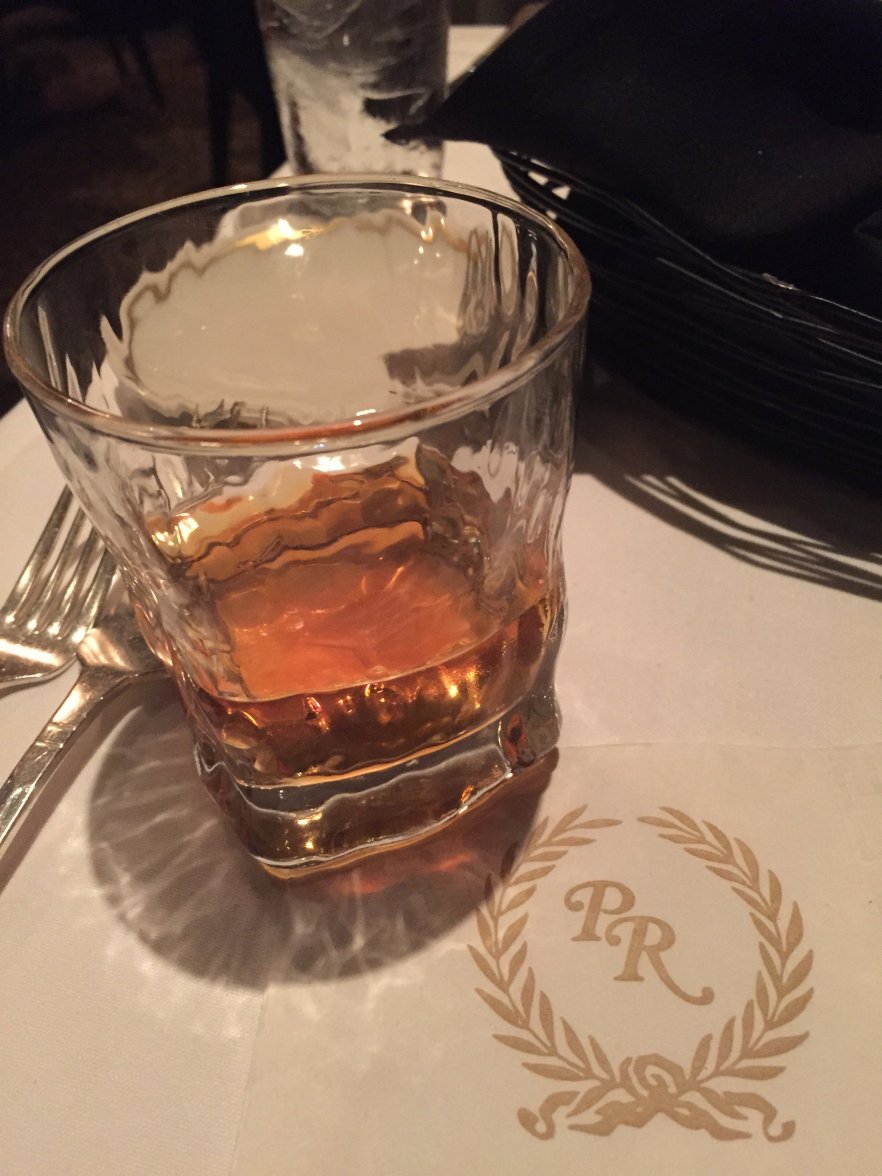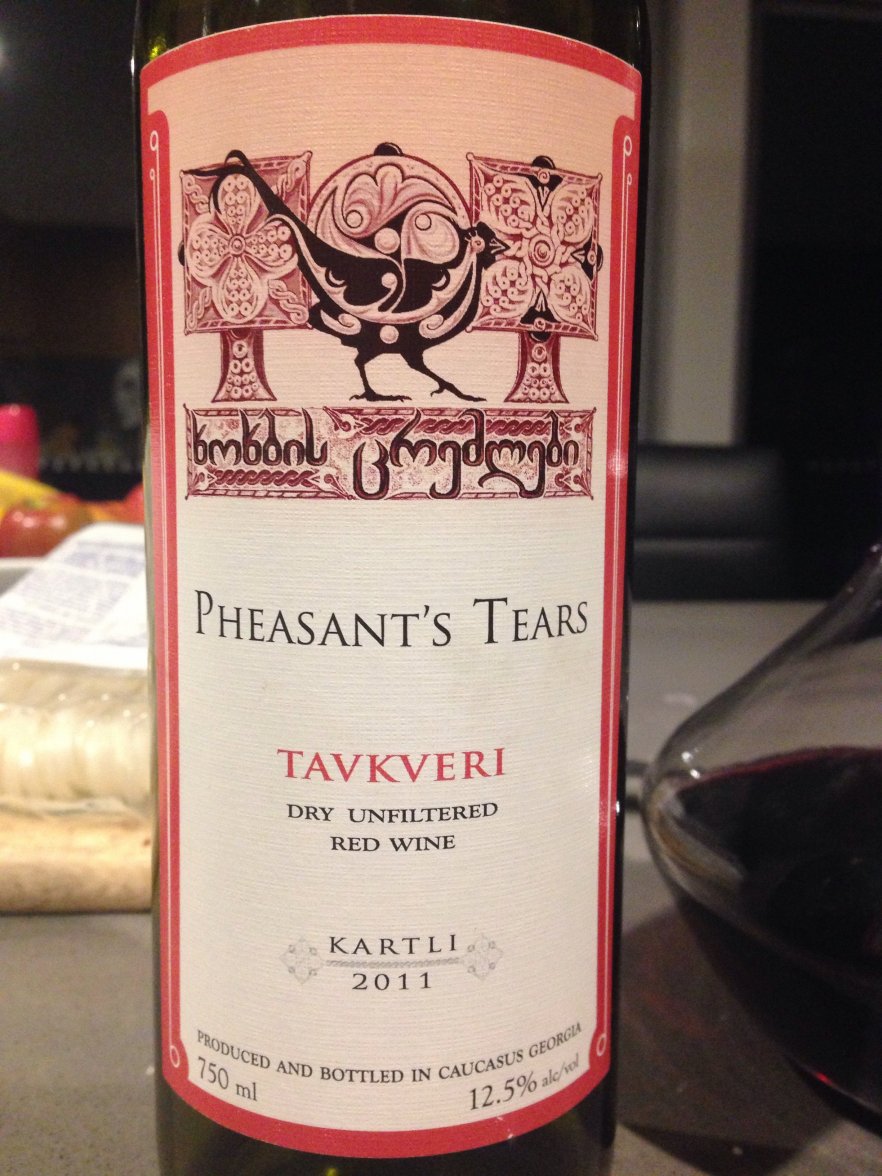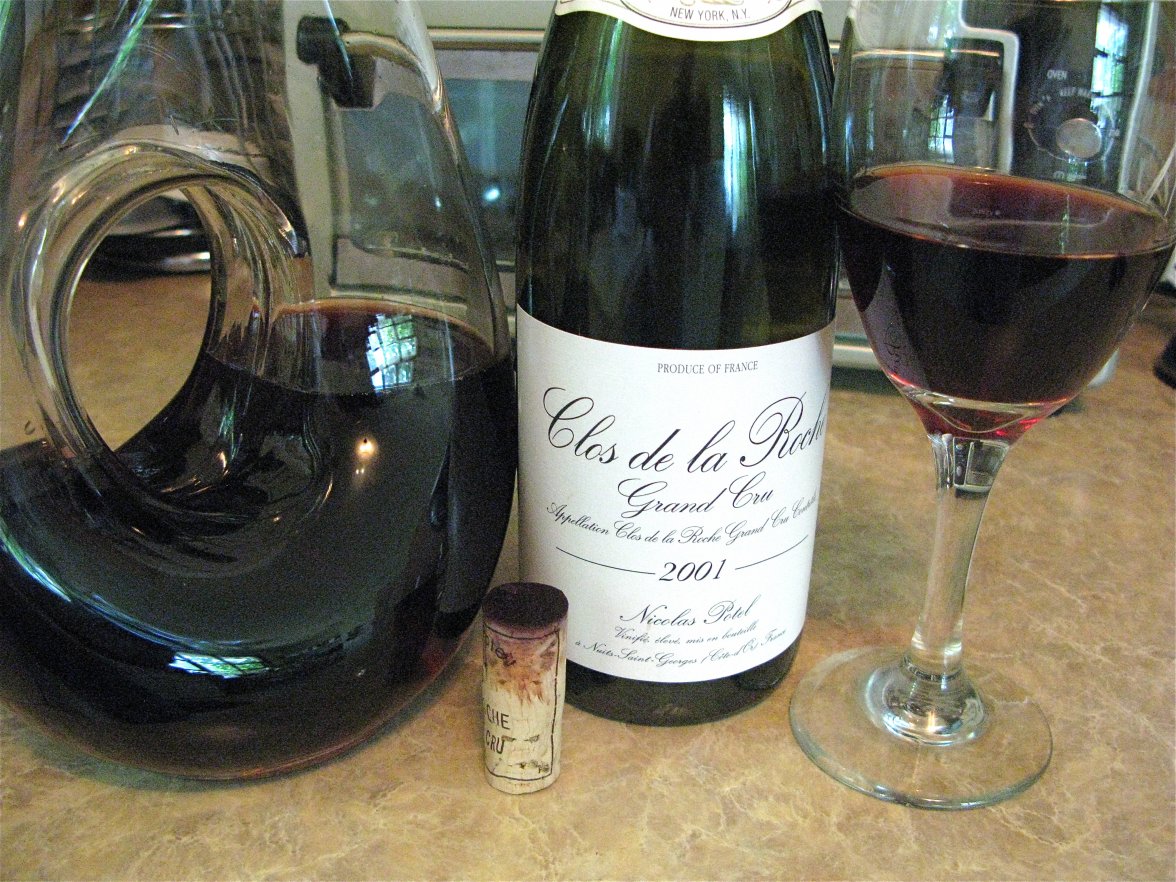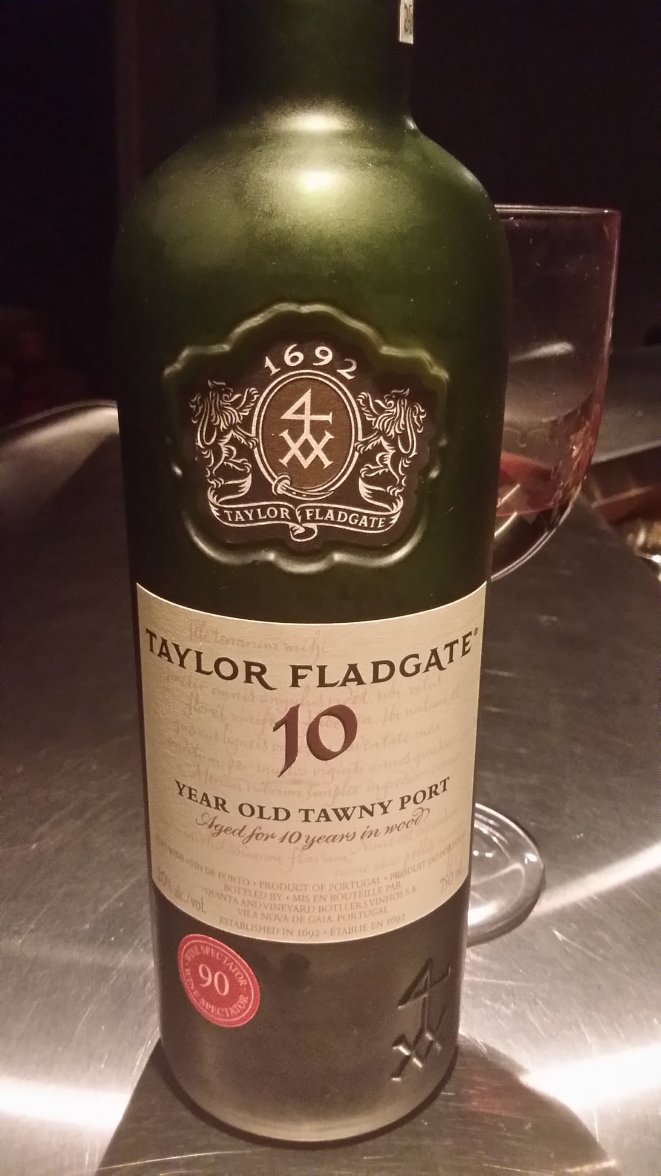WRUD (Drinking) Today?
Traveler
·- Posts
- 25,980
- Likes
- 27,692
ulackfocus
·Opened a bottle of 2001 Pride Merlot and 2008 Huet Le Haut Lieu Vouvray.
blubarb
··IG: #blubarb19Dry Martini, Miss Moneypenny, shaken not stirred.
"Just a moment. Three measures of Gordon's, one of vodka, half a measure of Kina Lillet. Shake it very well until it's ice-cold, then add a large thin slice of lemon peel. Got it?"
"Certainly, monsieur, Bond" The barman seemed pleased with the idea.
Good onyer, Traveler. You've got the class in the glass.
"Just a moment. Three measures of Gordon's, one of vodka, half a measure of Kina Lillet. Shake it very well until it's ice-cold, then add a large thin slice of lemon peel. Got it?"
"Certainly, monsieur, Bond" The barman seemed pleased with the idea.
Good onyer, Traveler. You've got the class in the glass.
CanberraOmega
·This thread has been too quiet! A Georgian wine my sister brought back
The wine is fermented and aged in a Kvervri
From wiki:

Kvevri
A Kvevri (Georgian: ქვევრი) (often incorrectly spelled as "Qvevri") is a large (800-3500 litres) earthenware vessel originally from Georgia in the Caucasusand dating back to about 8000 BC. It has an inside coat of beeswax, resembles an amphora without handles and is used for the fermentation and storage of wine, often buried below ground level or set into the floors of large wine cellars.
The kvevri is part of traditional Georgian wine making. In the past it was also used for storing grain, butter, cheese, vodka, marinades and a host of perishable foodstuffs, though it was developed primarily for wine making in Georgia. Such large ceramic storage vessels were made in many countries, though none can claim the central importance of large ceramic vessels for wine fermentation.
Makers of kvevri wine claim that such wine is stable by nature, rich in tannins, not requiring chemical preservatives to ensure its long life and superior in taste. The tannins found in this wine limit protein content and prevent turbidity.[1]In the wine-making process, grapes are poured into the kvevri, crushed and left to ferment and mature. Over a period of days, the grape skins are pushed down on the hour and the kvevri is finally covered with a suitable-sized stone cap sealed with clay, and left undisturbed for up to two years. When the wine is ready it is pumped out and bottled, after which the kvevri is sterilised with lime, ready for re-use. Since the Russian market for Georgian wine has dwindled to a trickle, Georgia has revived this ancient method and is exciting interest around the world.[2][3]
Commercial wineries such as Pheasant's Tears, Vinoterra and Monastery of Alaverdi, are exporting their kvevri-fermented wines to markets developing abroad. [4]
While the rest of the world calls this radical, risky, "natural" winemaking, the Georgians know winemaking on kvevri as simply the way that wine has been made since time began. The inside surface of a kvevri is covered with a thin layer of beeswax - essential for hygiene. A mixture of crushed limestone and water or hot water and ash or even just rigorous scrubbing are all effective methods of cleaning and sanitizing, which do not involve the use of anything noxious. For winemakers all over the world, Kvevri became a symbol of returning to more natural methods - really a shot against the modern industry's pristine and science-based approach.http://www.domainegeorgia.com/
UNESCO added the ancient traditional Georgian winemaking method using the Kvevri clay jars to the UNESCO Intangible Cultural Heritage Lists.[5]
The wine is fermented and aged in a Kvervri
From wiki:

Kvevri
A Kvevri (Georgian: ქვევრი) (often incorrectly spelled as "Qvevri") is a large (800-3500 litres) earthenware vessel originally from Georgia in the Caucasusand dating back to about 8000 BC. It has an inside coat of beeswax, resembles an amphora without handles and is used for the fermentation and storage of wine, often buried below ground level or set into the floors of large wine cellars.
The kvevri is part of traditional Georgian wine making. In the past it was also used for storing grain, butter, cheese, vodka, marinades and a host of perishable foodstuffs, though it was developed primarily for wine making in Georgia. Such large ceramic storage vessels were made in many countries, though none can claim the central importance of large ceramic vessels for wine fermentation.
Makers of kvevri wine claim that such wine is stable by nature, rich in tannins, not requiring chemical preservatives to ensure its long life and superior in taste. The tannins found in this wine limit protein content and prevent turbidity.[1]In the wine-making process, grapes are poured into the kvevri, crushed and left to ferment and mature. Over a period of days, the grape skins are pushed down on the hour and the kvevri is finally covered with a suitable-sized stone cap sealed with clay, and left undisturbed for up to two years. When the wine is ready it is pumped out and bottled, after which the kvevri is sterilised with lime, ready for re-use. Since the Russian market for Georgian wine has dwindled to a trickle, Georgia has revived this ancient method and is exciting interest around the world.[2][3]
Commercial wineries such as Pheasant's Tears, Vinoterra and Monastery of Alaverdi, are exporting their kvevri-fermented wines to markets developing abroad. [4]
While the rest of the world calls this radical, risky, "natural" winemaking, the Georgians know winemaking on kvevri as simply the way that wine has been made since time began. The inside surface of a kvevri is covered with a thin layer of beeswax - essential for hygiene. A mixture of crushed limestone and water or hot water and ash or even just rigorous scrubbing are all effective methods of cleaning and sanitizing, which do not involve the use of anything noxious. For winemakers all over the world, Kvevri became a symbol of returning to more natural methods - really a shot against the modern industry's pristine and science-based approach.http://www.domainegeorgia.com/
UNESCO added the ancient traditional Georgian winemaking method using the Kvevri clay jars to the UNESCO Intangible Cultural Heritage Lists.[5]
STANDY
··schizophrenic pizza orderer and watch collector- Posts
- 25,980
- Likes
- 27,692
ulackfocus
·Reminding myself of two things today......
1) Why the Morey-St. Denis area claims so much space in our wine refrigerator.
2) Why Clos de la Roche is my favorite vineyard, and the riper vintages / higher extract bottles (without going over the top) can absolutely be steak wines.
Well, it's prime rib - a lighter steak..... and yes, I know that's not a Burgundy stem but I'm the only one home now and it was in the drain board from last nights Vouvray extravaganza. Still have several bottles of '97 Potel CdlR and a couple '02 Ponsot CdlR, but this is the last of the '01 Potel CdlR.
1) Why the Morey-St. Denis area claims so much space in our wine refrigerator.
2) Why Clos de la Roche is my favorite vineyard, and the riper vintages / higher extract bottles (without going over the top) can absolutely be steak wines.
Well, it's prime rib - a lighter steak..... and yes, I know that's not a Burgundy stem but I'm the only one home now and it was in the drain board from last nights Vouvray extravaganza. Still have several bottles of '97 Potel CdlR and a couple '02 Ponsot CdlR, but this is the last of the '01 Potel CdlR.
AAAKK
·- Posts
- 25,980
- Likes
- 27,692
tpatta
··Happily spending my daughter’s inheritance'83 Burgundy? Got any more? I'll be right over.
- Posts
- 25,980
- Likes
- 27,692
ulackfocus
·'83 Burgundy? Got any more? I'll be right over.
2 more bottles - one is identical to this, the other is another Drouhin from the Echezeaux Grand Cru vineyard. You bring the rack of lamb; I'll decant in advance.
This Charmes-Chambertin was stunning and the Wehlener-Zonnenuhr Riesling was phenomenal. The secondary flavors that open up after 25 or 30 years are awesome in both varietals. You don't get this level of complexity in a New World wine very often. I guess it's hard to beat centuries upon centuries of experience with terroir. What a GREAT one-two punch of 1983!
tpatta
··Happily spending my daughter’s inheritanceSounds like a plan. I'll bring a '63 port to finish off the evening.
- Posts
- 25,980
- Likes
- 27,692
ulackfocus
·Nice selection this week:
2007 Match Butterdragon Hill Cab
2004 Caymus Special Selection Cab
2002 JJ Prum Wehlener Sonnenuhr Riesling Auslese
2009 Huet Le Haut Lieu Vouvray Moelleux
Wanted to do a head to head comparison of the Caymus and Match. Their very close in style and flavor, but when you factor in the Match at around $50 versus $200-ish for the Caymus it's a no brainer. In the not-too-distant-future, I'll put the same bottle of Match against a 2007 Hourglass ($125-ish). If I can find more Match, I'll load up as I only have 6 bottles left and it's just hitting it's stride. With 2 bottles of Hourglass and 5 bottles of Caymus, I can't see forking out that kind of money to replace either.
The Prum is.... well, typically fantastic. '02 is my second favorite year behind '83. The Huet is tarter than it's '08 counterpart that was mentioned earlier on this page. Not better, not worse - just different.
2007 Match Butterdragon Hill Cab
2004 Caymus Special Selection Cab
2002 JJ Prum Wehlener Sonnenuhr Riesling Auslese
2009 Huet Le Haut Lieu Vouvray Moelleux
Wanted to do a head to head comparison of the Caymus and Match. Their very close in style and flavor, but when you factor in the Match at around $50 versus $200-ish for the Caymus it's a no brainer. In the not-too-distant-future, I'll put the same bottle of Match against a 2007 Hourglass ($125-ish). If I can find more Match, I'll load up as I only have 6 bottles left and it's just hitting it's stride. With 2 bottles of Hourglass and 5 bottles of Caymus, I can't see forking out that kind of money to replace either.
The Prum is.... well, typically fantastic. '02 is my second favorite year behind '83. The Huet is tarter than it's '08 counterpart that was mentioned earlier on this page. Not better, not worse - just different.
- Posts
- 47
- Likes
- 132
barmy
·Heading to The Dam Pub in Thornbury, Ontario for supper. It's claim to fame is having over 450 single malts. I don't think I'll be driving home tonight. Now, where to start.........😜
- Posts
- 25,980
- Likes
- 27,692
ulackfocus
·You have been voted off the island.












